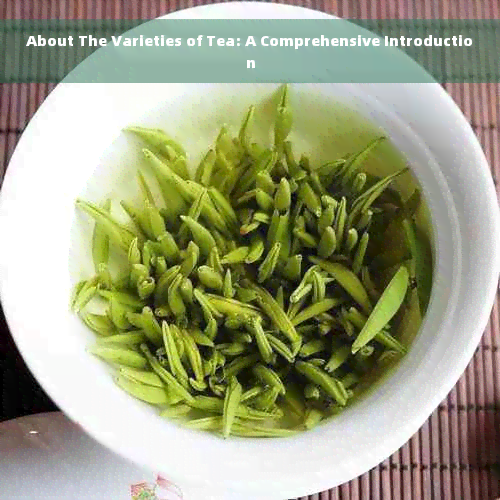About The Varieties of Tea: A Comprehensive Introduction

Tea, a beverage beloved by cultures around the world, has been a part of human history for thousands of years. Originating in China, it has spread across continents, evolving into a multitude of varieties, each with its unique flavor, aroma, and health benefits. This comprehensive introduction will delve into the rich tapestry of tea types, providing an insight into their origins, characteristics, and cultural significance.
1. The Basic Categories of Tea
Tea is broadly categorized into six mn types: white, green, oolong, black, yellow, and dark (including Pu-erh). Each type undergoes a different level of oxidation, which affects its flavor, color, and health properties.
1.1. White Tea
White tea is the least processed of all tea types. It is made from the youngest leaves and buds of the tea plant, which are simply dried and not oxidized. The delicate flavor and subtle aroma of white tea make it a favorite among tea enthusiasts. Varieties include Silver Needle, White Peony, and Longevity eyebrow.
*Key Points:*
- Origin: Fujian, China
- Flavor: Light and sweet
- Health Benefits: Antioxidants, anti-aging properties
1.2. Green Tea
Green tea is made by steaming or pan-frying the leaves to prevent oxidation. This process retns the green color of the leaves and the grassy, vegetal flavor that is characteristic of green tea. Popular varieties include Sencha, Matcha, and Gunpowder.
*Key Points:*
- Origin: China and Japan
- Flavor: Fresh and grassy
- Health Benefits: Rich in antioxidants, ds digestion, promotes weight loss
1.3. Oolong Tea
Oolong tea falls between green and black tea in terms of oxidation. It is partially oxidized, resulting in a complex flavor profile that can range from fruity and floral to roasted and earthy. Varieties include Tieguanyin, Jin Xuan, and Dan Cong.
*Key Points:*
- Origin: Fujian and Guangdong, China
- Flavor: Complex, ranging from fruity to earthy
- Health Benefits: Antioxidants, stress reduction
1.4. Black Tea
Black tea is fully oxidized, which gives it a rich, robust flavor and dark color. It is the most commonly consumed tea in the Western world and is often blended with milk and sugar. Varieties include Assam, Darjeeling, and Earl Grey.
*Key Points:*
- Origin: India, China, and Sri Lanka
- Flavor: Robust and malty
- Health Benefits: Antioxidants, cardiovascular health
1.5. Yellow Tea
Yellow tea is a rare type of tea that undergoes a unique process of post-oxidation yellowing. It has a distinctive yellow color and a smooth, mellow flavor. Varieties include Huangshan Maofeng and Mengding Huangya.
*Key Points:*
- Origin: China
- Flavor: Smooth and mellow
- Health Benefits: Antioxidants, digestive d
1.6. Dark Tea (including Pu-erh)
Dark tea is a category of tea that includes Pu-erh, which is aged and fermented. It has an earthy, full-bodied flavor and is known for its health benefits, particularly for digestion. Varieties include Raw Pu-erh and Ripe Pu-erh.
*Key Points:*
- Origin: Yunnan, China
- Flavor: Earthy and full-bodied
- Health Benefits: Digestive d, cholesterol reduction
2. Regional Varieties and Cultural Significance
Tea is not only a beverage but also a cultural symbol in many countries. Different regions have their unique varieties and traditions associated with tea.
2.1. Chinese Tea
Chinese tea culture is rich and diverse, with each region specializing in certn types of tea. For example, Dragon Well (Longjing) tea from Hangzhou is famous for its green tea, while Pu-erh hls from Yunnan. Chinese tea ceremonies are also an integral part of the culture, emphasizing harmony, respect, and tranquility.
2.2. Japanese Tea
Japanese tea culture is deeply rooted in Zen Buddhism. Matcha, a powdered green tea, is central to the Japanese tea ceremony, which is a highly ritualized and meditative practice. Other varieties like Sencha and Genmcha are also popular.
2.3. Indian Tea
Indian tea is known for its bold flavors and rich aroma. Assam and Darjeeling are two of the most famous tea-producing regions in India. Indian tea culture often involves adding milk and spices to the tea, creating masala ch.
2.4. British Tea
British tea culture is characterized by the tradition of afternoon tea, which includes tea served with a selection of sandwiches, scones, and pastries
